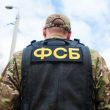Public safety, critical-infrastructure entities make 4.9 GHz proposals to the FCC
Public-safety use of the 4.9 GHz spectrum band should be protected via a priority-and-preemption rules that allows sharing with critical-infrastructure entities, but exactly how this scheme is implemented remains a topic of considerable debate, according to dozens of comments to the FCC exploring the matter.
Comments about the best use of 4.9 GHz (4940 MHz to 4990 MHz) were due to the FCC in the latest proceeding about the airwaves, which traditionally have been dedicated to public safety but have been underutilized in the past, according to FCC commissioners. In the proceeding, the FCC is examining an alternative path for the band rather than implement the state-licensing scheme approved during the fall of 2020—rules that were halted last year.
Reply comments in the proceeding were due this week. With the commenting period complete, the FCC can issue a much-anticipated ruling on the matter, but no timetable has been announced for such action.
Cited most often by commenters in the proceeding was the position of the Public Safety Spectrum Alliance (PSSA), which initiated the push for the FCC to reconsider its 2020 ruling in a filing submitted at the end of December 2020.
Written by former FirstNet Authority Vice Chairman Jeff Johnson, the PSSA reply comments propose allowing non-public-safety use of 4.9 GHz spectrum, as long as it does not interfere with public-safety operations and that public-safety uses are prioritized and can preempt other uses.
PSSA also asks the FCC to issue a nationwide license to the 4.9 GHz spectrum, indicating that this approach is the best way ensure that the spectrum would be utilized and encourage that an ecosystem of cost-effective solutions is established for users of the band.
“A nationwide license is the most effective way to maximize the utilization of the 4.9 GHz Band, and the most efficient way to ensure that public safety users enjoy priority and preemption,” the PSSA reply comment states. “A nationwide license is also the most effective way to facilitate the Commission’s other goals regarding the 4.9 GHz Band, including nationwide network deployment, interoperability, and reduced equipment costs.
“Furthermore, the 4.9 GHz nationwide licensee should have the authority to appoint a nationwide band manager in order to coordinate usage of the band, ensure interoperability, and protect public safety operations from interference.”
Although the PSSA originally called for FirstNet Authority to be the nationwide licensee at 4.9 GHz when the PSSA was established in August 2020, the PSSA has not mentioned the FirstNet Authority in its FCC filings during the past year.
But this did not stop many other commenters from citing the original PSSA position. Filings from The Public Safety Network and several individuals supporting a license to the FirstNet Authority and comments from the Tennessee Sheriffs’ Association and some individuals opposing a 4.9 GHz license designation to the FirstNet Authority.
The International Association of Fire Chiefs (IAFC) expressed support for a nationwide licensee at 4.9 GHz, while the International Association of Chiefs of Police (IACP) commented that, “at this point, it is wise to keep all options open when considering a best path forward with 4.9 GHz.”
Reply comments from the State of California Governor’s Office of Emergency Services (Cal OES) note that it “strongly opposes” the notion of a nationwide licensee or band manager.
“This concept could undermine the use of the spectrum by state and local public-safety agencies and would force public safety agencies to conduct business with a specific vendor to make use of the spectrum,” according to the Cal OES filing. “Management of the 4.9 GHz spectrum is a core public safety function that should not be delegated to a third party.”
AT&T—the carrier giant that won the contract to build and maintain the FirstNet public-safety broadband system—expressed support for the concept of a nationwide licensee, but did not specify the FirstNet Authority or any other entity as a preferred recipient. Both Verizon and T-Mobile oppose the notion of a nationwide 4.9 GHz license or band manager, expressing support for rules that would let public-safety users make local decisions about the spectrum’s use.
“The record supports local determination of 4.9 GHz public safety uses, not a single nationwide license to FirstNet and its contractual partner AT&T, nor appointing FirstNet/AT&T the nationwide band manager,” according to Verizon’s reply comment. “Competition and choice for public safety communications best serves public safety.”
Both AT&T and T-Mobile noted the importance of the FCC adopting 4.9 GHz rules supporting public-safety use of 5G technology in the band. This sentiment was echoed by the Safer Buildings Coalition (SBC), which also noted the 4.9 GHz airwaves should be used to provide in-building coverage to first responders.
“The inability for public safety to communicate inside buildings represents an existential threat to the life and safety of both First Responders and the communities they serve,” according to the SBC reply comment. “The capabilities of the 4.9 GHz Band are especially well-suited for in-building use cases. This is particularly true of applications being developed to increase the ability of public safety to deliver more effective solutions when operating inside buildings.
“This development, along with information from 911 PSAPs, CAD systems and other emerging applications that require high bandwidth and low latency, will require spectrum in the 4.9 GHz Band to operate effectively. It is essential for the FCC to adopt a framework and supporting rules that support robust, resilient, and ubiquitous availability of broadband wireless connectivity inside buildings.”
Numerous filings cite the need to allow critical-infrastructure entities to utilize the 4.9 GHz spectrum in a manner that would not harm public-safety operation—a position noted by the United Technology Council (UTC), the Enterprise Wireless Alliance (EWA) and Florida Power & Light. Not only would enable greater interoperability between public safety and critical infrastructure—something that often is needed during large emergency responses—but the additional use case would foster greater vendor innovation and competition, commenters state.
“Permitting [critical-infrastructure] entities to access the band will maximize the use of the spectrum while protecting and promoting public safety use of the band,” UTC states in its reply comment. “Frequency coordination coupled with technical restrictions should be the primary approach for managing spectrum sharing between public safety and non-public safety operations, and dynamic sharing such as SAS may have a role in coordinating certain applications, such as ADR (i.e. Aerial, Drone and Robotics operations).”
EWA echoed this sentiment and noted a potential legal problem associated with proposals to have the FirstNet Authority—part of the NTIA—become a nationwide licensee for the 4.9 GHz band.
“EWA opposes the recommendation of the Public Safety Spectrum Alliance that FirstNet take over control of the 4.9 GHz band,” the EWA reply comment states. “As the FCC itself has noted, that proposal raises significant legal and policy issues. Not least of those are the extent to which AT&T would assume significant control of this spectrum without the oversight normally applicable to FCC licensees and the fact that the spectrum would no longer be subject to the FCC’s jurisdiction except in the most limited sense.
“In EWA’s opinion, it also would require yet another [further notice of proposed rulemaking (FNPRM)], as nothing in this FNPRM suggests that the nationwide band manager might be under the jurisdiction of the National Telecommunications and Information Administration [NTIA], part of the Department of Commerce, rather than the FCC.”
Reply comments from the Wireless Internet Service Providers Association (WISPA) expressed support for unlicensed use in the 4.9 GHz band, with for public safety having guaranteed priority and preemption within the spectrum. This usage would be determined in a manner similar to the Spectrum Access System (SAS) used in the Citizen Broadband Radio Service (CBRS) band, according to WISPA.
“The record reflects strong interest in allowing unlicensed use of the 4.9 GHz band alongside public-safety licensees,” the WISPA filing state. “WISPA appreciates the views of forward-thinking public-safety associations that recognize the benefits that an ‘at the ready’ equipment ecosystem can bring to public-safety licensees.
“Those opposing non-public safety use or seeking the meager incremental benefit of allowing only CII [critical infrastructure] to be eligible to use the band fail to advance any argument supporting their position, instead relying on conclusory positions they cannot substantiate.”


















It seems to me that allowing local entities to control the spectrum, through local agreements with local users, would be the only real workable solution.
. The big boys already have the Firstnet system and their own spectrum holdings-they have enough. Putting in a nationwide licensee would end up shutting down the use of simple low cost systems by local entities, in favor of making the space available only for the offerings of politically well connected vendors and their proprietary high dollar equipment. One could sure see a lot of speculation going on too. Local Fire Department, who has use for some spectrum today, is told to pound sand because that spectrum might someday be of use to somebody that is willing to pay a lot for it! You know the drill!